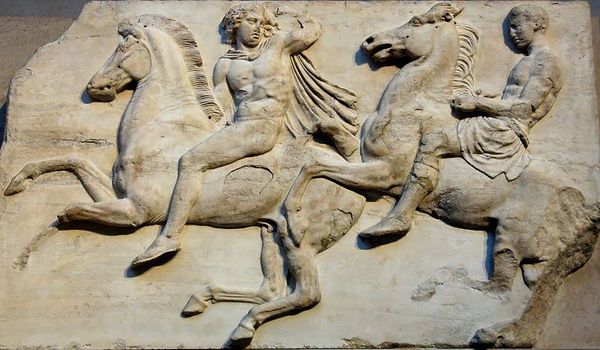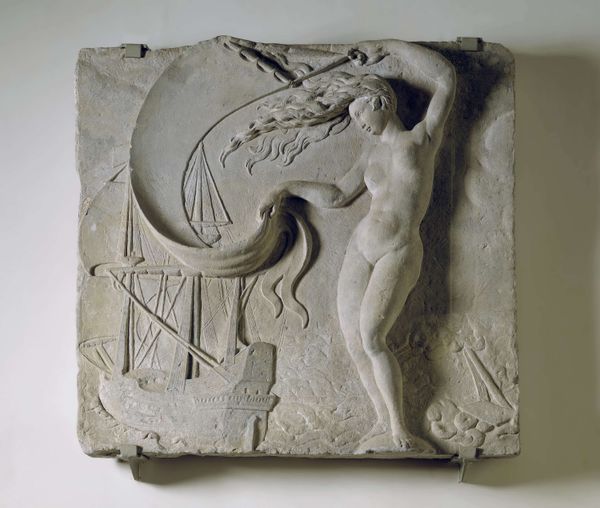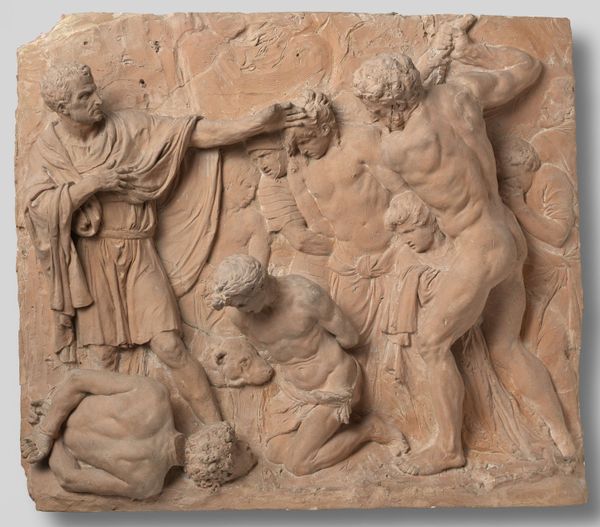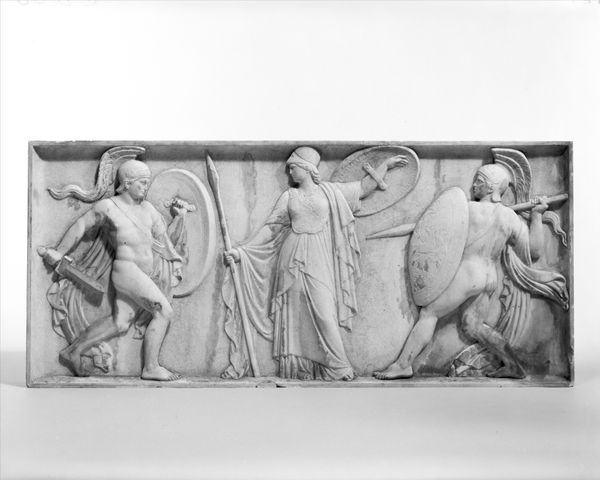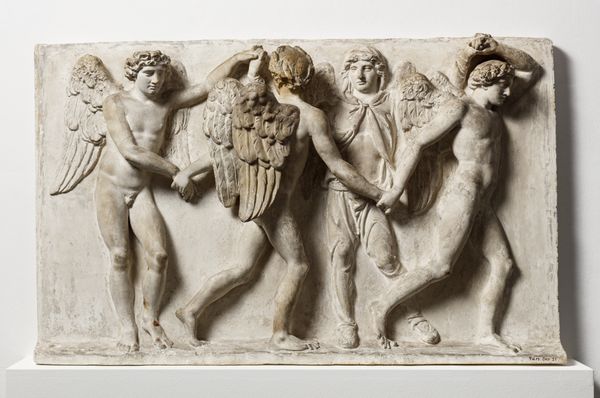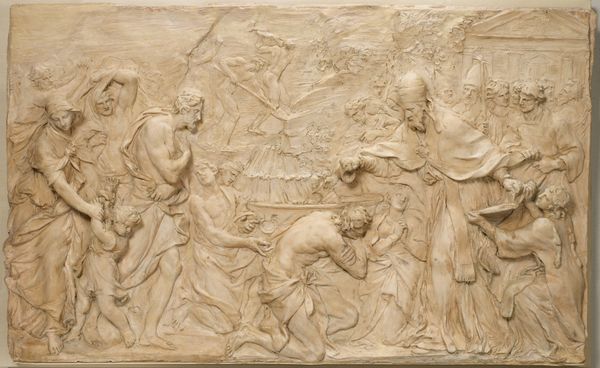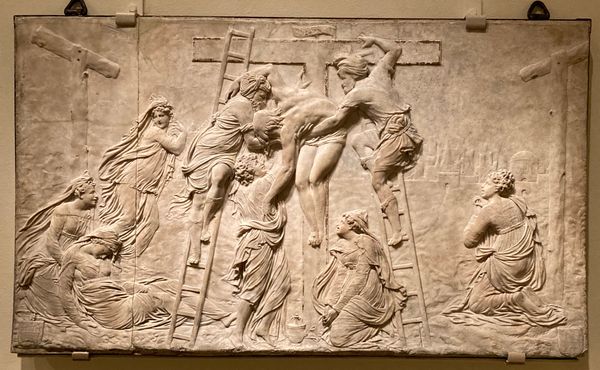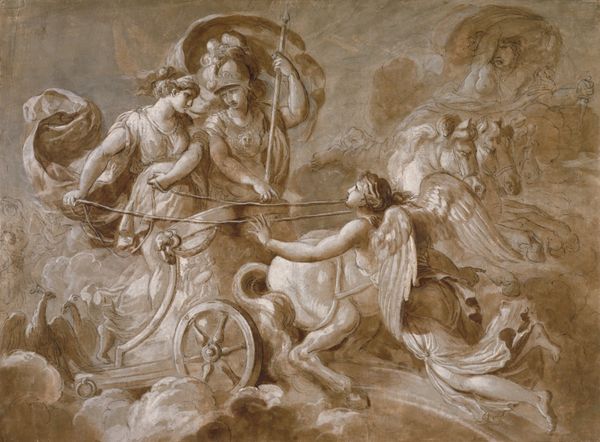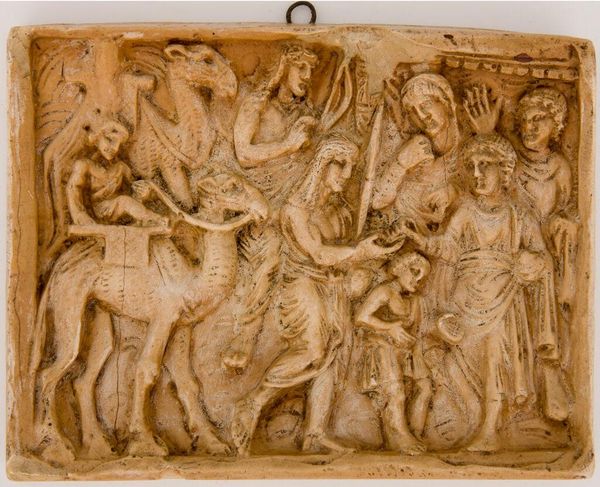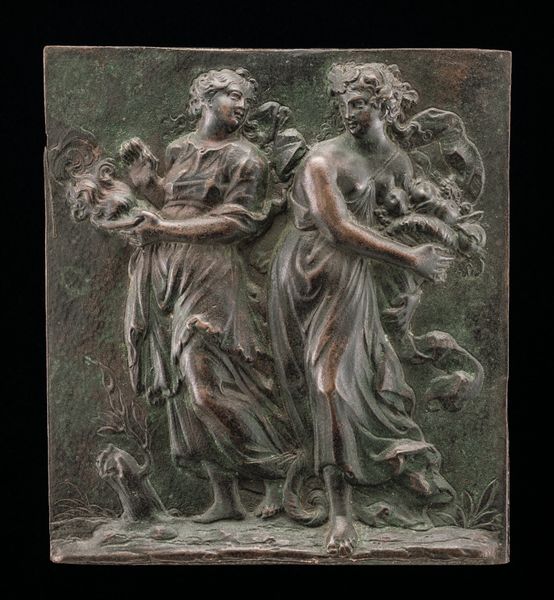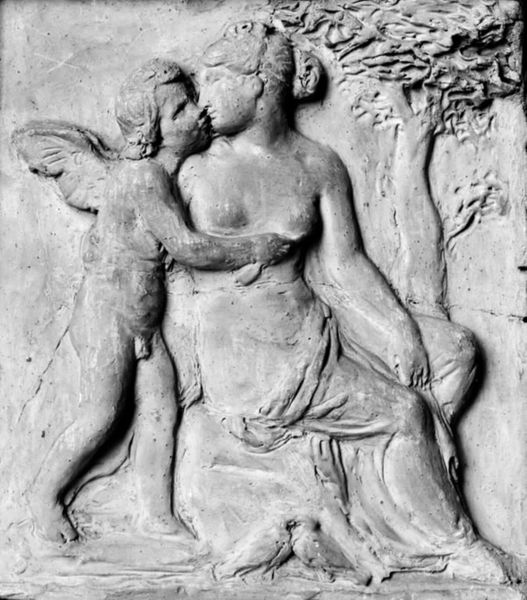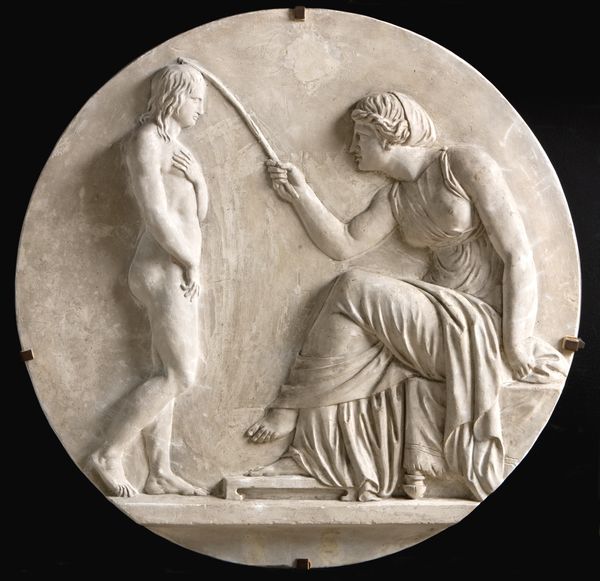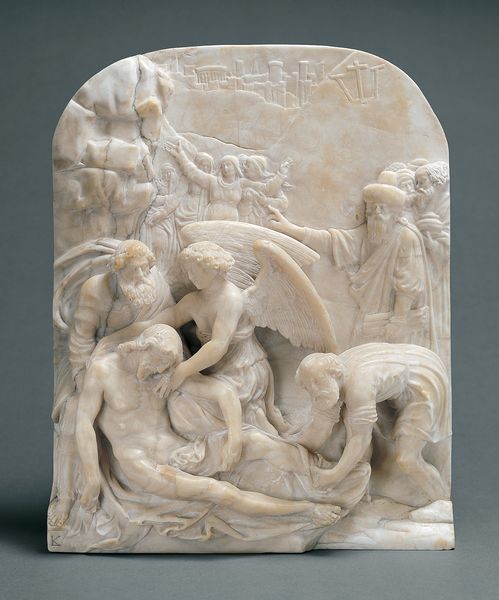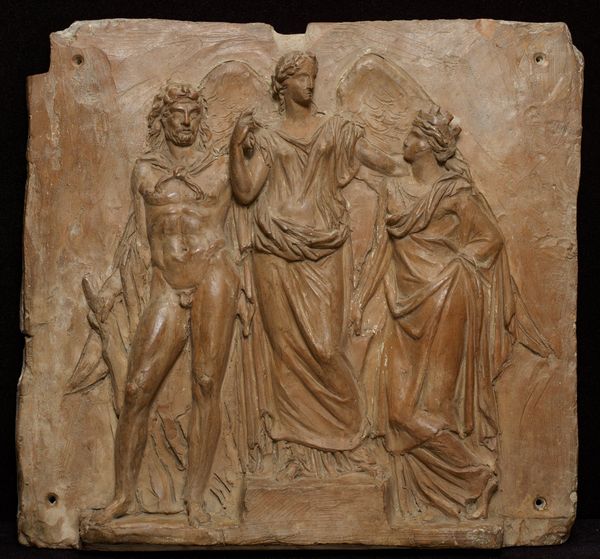
carving
#
carving
#
greek-and-roman-art
#
figuration
#
ancient-mediterranean
#
nude
Copyright: Public domain
This ceramic plaque was made in ancient Greece, likely sometime between 700 and 31 BC. Created from terracotta, a humble material formed from earth and water, this pinax, or painted tablet, presents us with a snapshot into the world of the ancient Greeks, their mythology, and their artistic practices. Look closely at the way the figures of Eros, Aphrodite, and Hermes are rendered in relief. The artist skillfully manipulated the clay, pressing and carving to bring these divine figures to life, while the fine details and the addition of color would have required meticulous craftsmanship. But consider too how terracotta itself speaks of the world in which it was made. A common material used in architecture and everyday objects, it reflects a society deeply connected to the earth and its resources. The creation of terracotta objects like this would have involved specialized workshops, a testament to the division of labor and skill in ancient Greek society. The Locri Pinax invites us to appreciate the artistry, not just as an aesthetic achievement, but as a tangible expression of ancient Greek culture, labor, and belief.
Comments
No comments
Be the first to comment and join the conversation on the ultimate creative platform.
